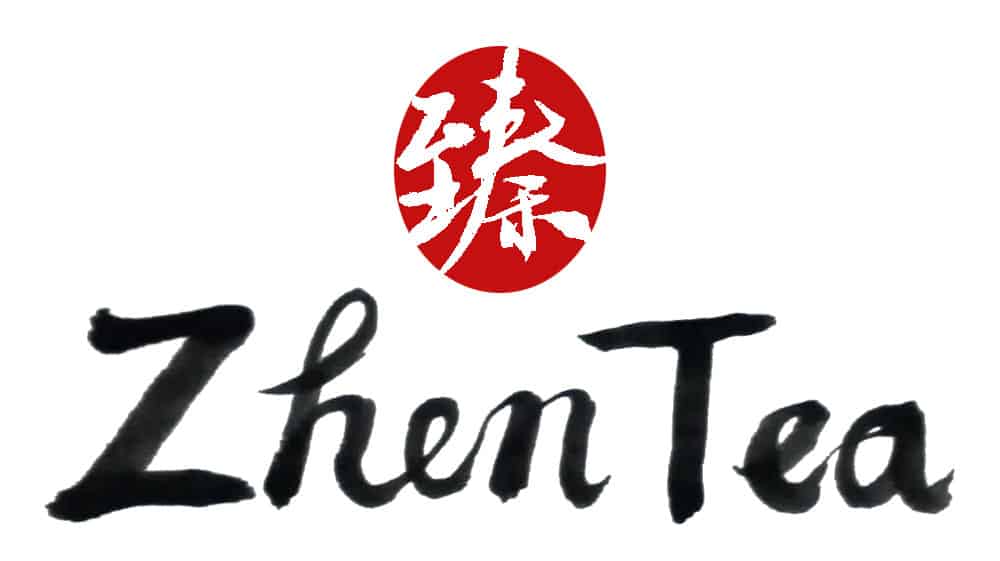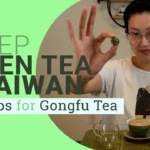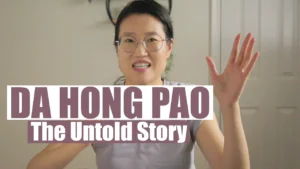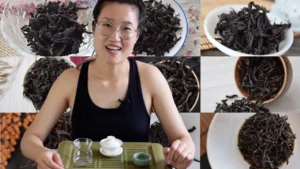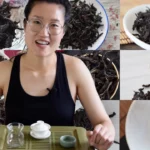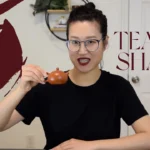A Game with Water
Our tea trip was not a typical sourcing trip. We don’t need to go to China to source tea. With over 20 years of experience with farmers and producers all over China and the connections of our tea consultant Jianli Wu, we know who is making good tea and we can find it and have it sent to us. We embark on tea trips to deepen our knowledge of tea processing and to share the knowledge we have with farmers and producers. This may seem like a bold claim, but with a resume like Jianli Wu, these are just the facts. Of course we love to do the fun stuff too: visit the tea gardens, visit the tea factories, taste different batches of teas. But we do more than that. We participate in every step of tea processing, literally from bush to cup. When visiting the tea gardens, we eat tea buds on the way, which tells us the basic difference between regions and cultivars. We pluck the tea just like the workers. This quickly honed my skills at telling different cultivars just by looking, something I have always had difficulty doing and have always been in awe of my mother, Jianli, who is so adept at this. We also taste the tea after each step during the process. To be frank, it’s really not delicious most of the time. By doing this, we understand how each step affects the final taste of the tea. Staying with the workers whenever they are handling tea is the utmost rewarding, though tiring. During the irregular diet and sleepless days and nights, we understand the preciousness of fine teas even more. We also understand why some people gradually walk away from the traditional way of processing tea – because it is too hard!
Processing the Tea
Since this was my first time processing tea, I chose to make black tea. No offense to black or white tea lovers, but they are the easiest to process, and I felt I could learn more from the slightly more challenging black tea process — wither, rolling, oxidizing, and drying.
When I got started processing the leaves, I realized that I didn’t have the answer to a key question that comes up again and again — when! In tea process, timing is king. A little bit early or a little bit late at any point in the process and the tea will taste differently. Once the perfect moment has passed, it cannot be recaptured and the deficiency will be present in the final result. Only the most skilled tea processor can make up for these deficiencies and even then, not fully. While I know that the leaves should be withered until they have a certain appearance, but when exactly is that? I know that the leaves should be roll and fully oxidize, but when exactly does fully oxidized occur? What does fully oxidized look like? When should I stop rolling? When I taste a tea that is astringent I know it’s a deficiency in oxidization process. But does simply prolonging the time of oxidization solve this problem, or is the problem rooted in the rolling technique? I’m not sure. I started out so confident that I could make a decent black tea until I got started. My confidence was quickly replaced by millions of questions rushing through my head.
As for my mother, Jianli, she established the habit of making tea every time she visits Anxi years ago. With that experience and her deeper understanding of processing theory, she had more of a clue why certain steps were done, what effect those steps would have and how to actually make oolong tea. Her goal on this visit was to make a fine Tie Guan Yin. This was a bold and courageous undertaking, as oolong is one of the most difficult teas to make! Even with experience, there is a lot of tweaking to do with the process since the condition of every batch of the leaves is different and the weather conditions are different from day to day. These little details may seem irrelevant to a novice, but the greatly affected the tea making process and the resulting batch of the tea. For example, the first batch of the oolong we made was a bit over oxidized because it took us an hour or so to find and clean the wok for the kill green. The third batch oxidized more quickly than we anticipated because there were other people doing killing green and roasting in the same room, which increased the ambient temperature and accelerated the oxidation of the tea. There is much to consider when processing tea.
The Result
During our stay in Anxi, we made five teas in total: one Tie Guan Yin made with Da Ye Wu cultivar, two different Tie Guan Yins, a Guan Yin Hong, and a block Tie Guan Yin which mimiced the Zhang Ping Shui Xian pressing process.
As with many things, it’s easier to watch tea be made rather than make it. Processing tea can be as simple as drying tea, but it can be as complicated as it gets when it comes to the the details of the steps. Many people ask me how much do they oxidize this tea, or how do they know when it’s time to ‘kill green’. I often tell tea lovers that knowing the basics of tea processing is good enough, because I don’t think a 1000 page book is sufficient to explain the details of tea making, not to mention a short conversation. Just in the oolong tea category, each oolong has its own process when it comes to the details. To some people, it’s a bit of a tall tale that some Chinese farmers can tell the cultivars of the tea or the weather when the tea was processed from the flavor. But with substantial knowledge to the tea process and tasting, it is well known that the taste of a tea reflects every detail of the tea itself – the regions where it was grown, the cultivar, how it was processed, which parts of the process were not properly done and even if it was not handled properly.
Tea master has been an overused term in North America as if everyone who knows how to make tea is a master. However, knowing how to dry the tea doesn’t a master make. Making dried teas is not hard, but making good teas is certainly not easy.
